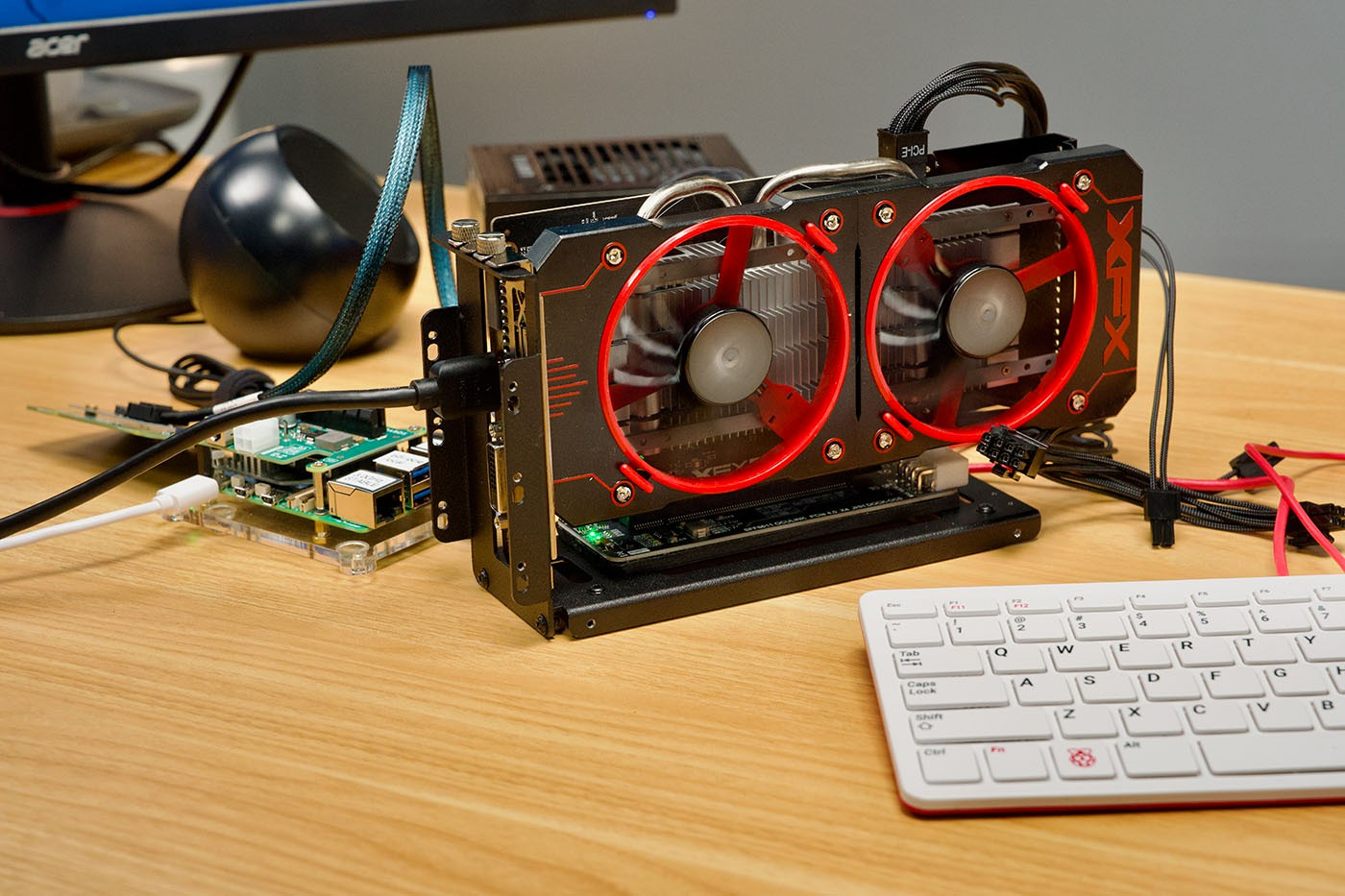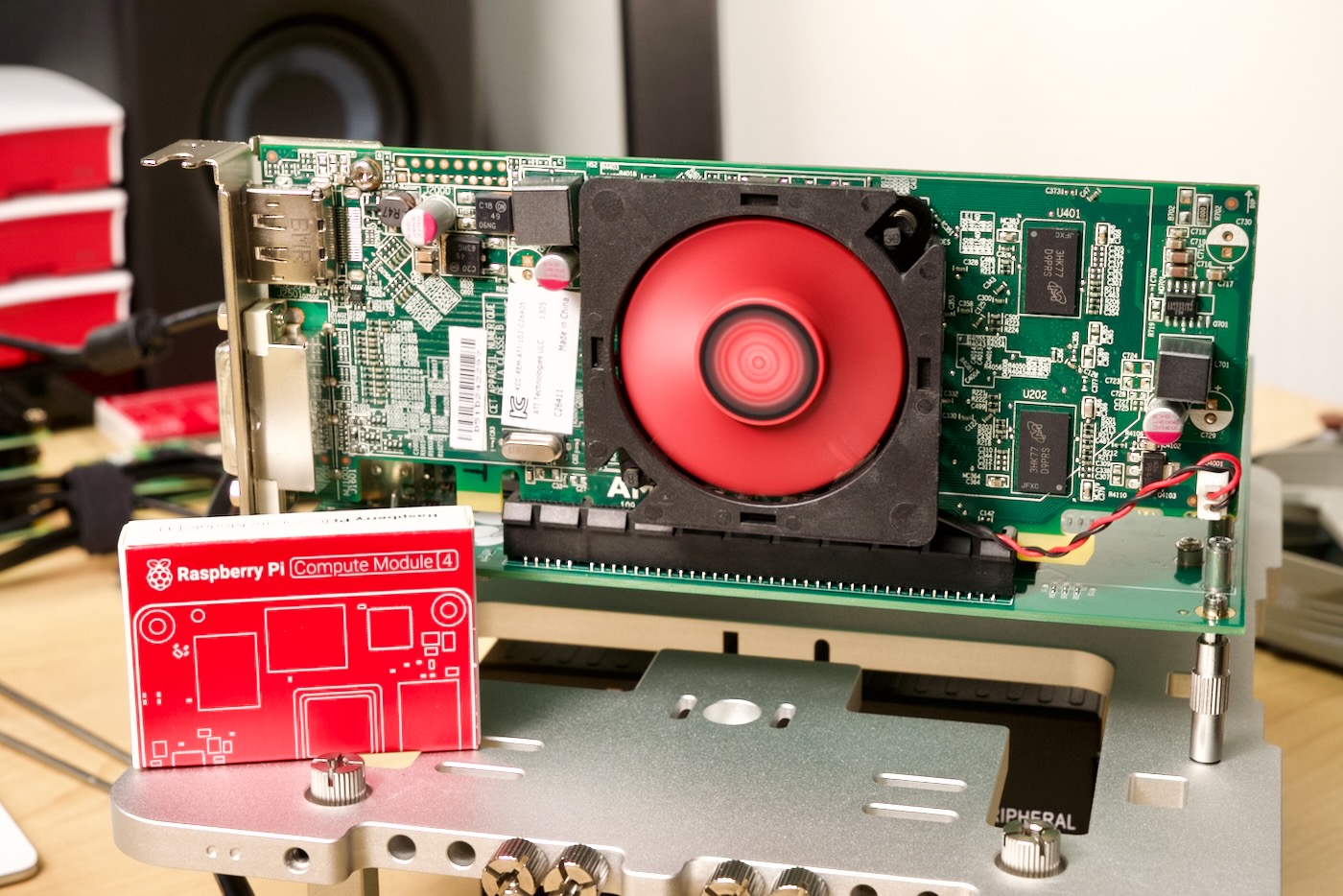
When we talk about Raspberry Pi we immediately think of projects that can be done in a weekend and that don’t have such a high degree of complexity. However, there are those who take on greater challenges using a Raspberry Pi.
In a very challenging project, content creator Jeff Geerling managed to connect a video card AMD Radeon RX 460 to a Raspberry Pi 5, transforming the small computer into a machine capable of running demanding games in 4K resolution.
Also read
Scary: User turns to Raspberry Pi to integrate ChatGPT with a stuffed koala
Neighbors bothering you with loud music? Use Raspberry Pi to disable speakers
First challenge: physical connection
The recently launched Raspberry Pi 5 already offers a significant advance in terms of processing power compared to its predecessors. However, Geerling decided to take the device’s capabilities to a new level, exploiting the potential of the PCI Express bus available in the new version of the Pi.
The process of connecting the external GPU to the Raspberry Pi 5 was complex to say the least. Geerling used a series of adapters, starting with an M.2 slot on the Pi, connected to an external GPU dock via an M.2 adapter for Oculink. This arrangement allowed the physical connection of the graphics card to the Pi’s PCIe bus.
However, the challenges were not limited to just physical connection. The Raspberry Pi 5’s PCIe slot provides just 5W of power, far short of the 75W that a desktop graphics card would typically receive from a standard motherboard. To overcome this limitation, Geerling had to supply external power to both the GPU and the slot itself, ensuring that the RX 460 could obtain all the power it needed to function.
Second challenge: Software

In the software field, the changes were equally extensive. Geerling applied a documented patch to increase the Pi’s PCIe lane speed from 2.0 to 3.0, providing a major bandwidth boost for the GPU, which was only receiving 1/8th of the PCIe lanes it would normally have.
To make the GPU work effectively, it was necessary to patch the Linux kernel to include the open source AMDGPU driver, which supports Arm architectures and provides decent performance for the RX 460.
The choice of this specific board and its Polaris architecture was strategic, being new enough to be practically useful and supported by the AMDGPU driver, but old enough to have mature driver support, as well as being affordable.
After applying several kernel patches and recompiling them, installing AMD’s graphics firmware managed to make both graphics output and 3D acceleration work relatively normally.
In the end everything worked out

The end result is impressive: the system was able to run games like Doom 3 (2004) and Tux Racer in 4K resolution, albeit with some reduced settings. Geerling also reported that the card rendered the Pi’s operating system user interface smoothly in 4K, something the Pi’s integrated GPU can do, but with noticeable performance drops, especially when using multiple monitors.
Despite its success, the project is not without problems. Geerling noticed that graphics acceleration in the Chromium browser and support for GPU-accelerated video encoding and decoding were not working properly.
While this project is more of a proof of concept than a practical solution for most Raspberry Pi users, it highlights the potential and flexibility of these small computers.
Source: Ars Technica
Source: https://www.hardware.com.br/noticias/gpu-externa-raspberry-pi-5-jogos-4k.html


